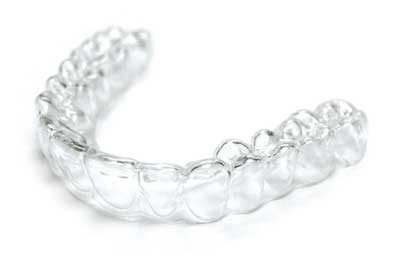Orthodontic treatment with clear aligners is a quickly growing sector of orthodontic treatment. Both the increase in awareness of esthetics and the increase in orthodontic treatment demand from adults has fueled the demand for a more esthetic orthodontic treatment technique. The public demand for fast and esthetic treatment has been addressed by other dental sectors with approaches such as “instant orthodontics” in which crowns or veneers are used to mask malalignment or with products that claim to use “new techniques” to simply align anterior teeth without addressing other aspects of the occlusion that may need treatment to maintain a healthy dentition. Obviously, these types of approaches raise ethical concerns and the need to educate the public as to the shortfalls of these types of approaches. Fixed appliances have become smaller and more esthetically acceptable with the development of ceramic brackets, but they are still more noticeable than clear aligners. Dozens of companies worldwide now offer some type of clear aligner orthodontic product. While research has been done in the area of clear aligners, much of the early research was focused on trying to discredit the use of aligners as an option for orthodontic treatment except for minor crowding or spacing cases. Even so, there was some research that was done to further improve and progress the clear aligner technique. This is still a rapidly developing area and as a result, much of the literature consists of case reports.

Records required to begin aligner treatment can include a case submission form, upper and lower PVS impressions, PVS bite registration, full-mouth or panoramic X-rays, and facial and intraoral photographs. (2) Sometimes digital scans can be used instead of impressions and bite registration.
At the lab, a treatment plan is produced that includes 3D models of the patient’s present and projected dentition, and information on how many aligners will be needed, along with any IPR (interproximal reduction) recommended. For intrusions and extrusions, acrylic buttons may be attached to teeth temporarily to add force to movement.
Success depends heavily on compliance. Patients are generally happier with aligners to begin with, because they’re nearly invisible and can be taken out for brushing and eating. The disadvantage of aligners is that the patient has complete control over their use. Aligners must be worn 20 to 22 hours per day for treatment to remain on track. Suppose a patient takes the aligners out to snack in front of the TV, then falls asleep. Before they know it, morning has come and the aligners have been out of their mouth for eight hours. What does that do to the carefully crafted schedule of movement?
If a teenager removes aligners in the school cafeteria and loses them, treatment can be set back for weeks. If an adult leaves for a business trip or vacation and forgets their aligner box — same problem.
Some manufacturers build in a checkpoint at intervals, so if a patient gets off track, corrections and refinements are made mid-treatment. ClearCorrect, for instance, uses a phase-based approach, manufacturing and shipping only four aligner sets at a time, to make it easy to incorporate changes.
The protocols for aligner orthodontics are still being refined. Today’s recommendations might change next month, or next year. New adjunctive treatments may be developed; some may be abandoned. One thing that’s certain is that the next time a patient’s face registers instant dismay when you mention orthodontics, you have a nearly invisible option to offer.
